
A key factor in minimally invasive knee surgery is protecting and preserving muscles. This is particularly true for partial or total knee replacement. The muscles provide strength and control of your knee. The muscles are also an important factor in regaining motion. As you would expect, not cutting or detaching muscles around the knee results in less pain, better motion and a faster recovery.
There are a number of different surgical approaches to the knee joint. The most common knee incision is the “peripatellar” incision (Fig. 1, Left). This incision has the advantage of being technically easy for the surgeon and provides good exposure to the knee. A disadvantage of this approach is that it detaches one third of the quadriceps muscle. The quadriceps muscle is the big muscle on the front of your thigh and attaches to the upper part of the kneecap. Although the incision in the muscle and tendon is repaired at the end of the procedure, patients with knee replacement through this approach tend to have more pain. Muscle activity of the leg pulls on the suture line in the muscle. Detachment of the muscle also results in weakness. Patients with peripatellar incisions are less likely to be able to lift their leg the day (straight leg raise) after surgery.
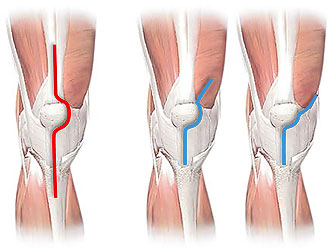
Fig. 1. Surgical approaches to the knee. Left: medial peripatellar, * = vastus medialis;
Center: midvastus; Right: subvastus.
An alternative approach is the “midvastus” approach (Fig. 1, Center). This is a slight improvement over the peripatellar approach; however, it still cuts into the muscle.
The subvastus approach (Fig. 1, Right) is a truly “quadriceps-‐sparing” surgical technique. The entire quadriceps muscle is left intact. As you would expect, patients who have a total or partial knee replacement with the subvastus approach have less pain, better muscle control and overall faster recovery.
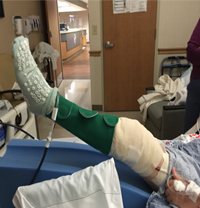
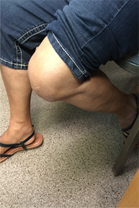
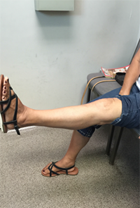
Fig. 2. Left: Patient able to do straight leg raise one day after subvastus quadriceps-‐ sparing total knee replacement. Center and Right: range of motion after subvastus total knee replacement.
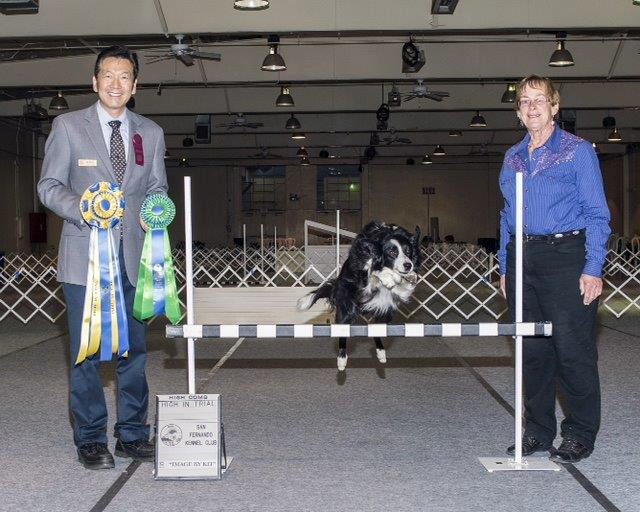
Fig. 3. Dr. Grimes performed a subvastus approach knee replacement on Louise. Three months later, she was able to take her dog, Uno, through performance competition trials and won!